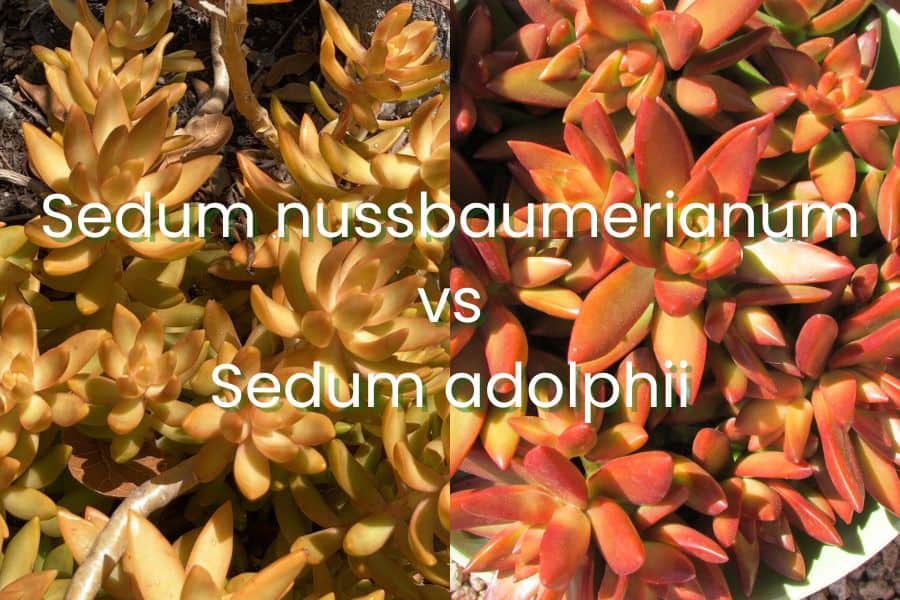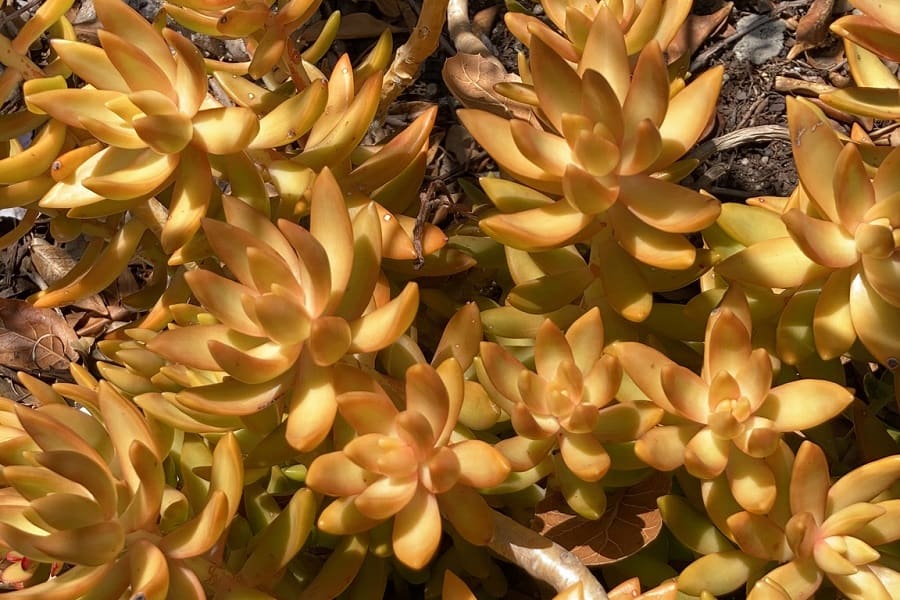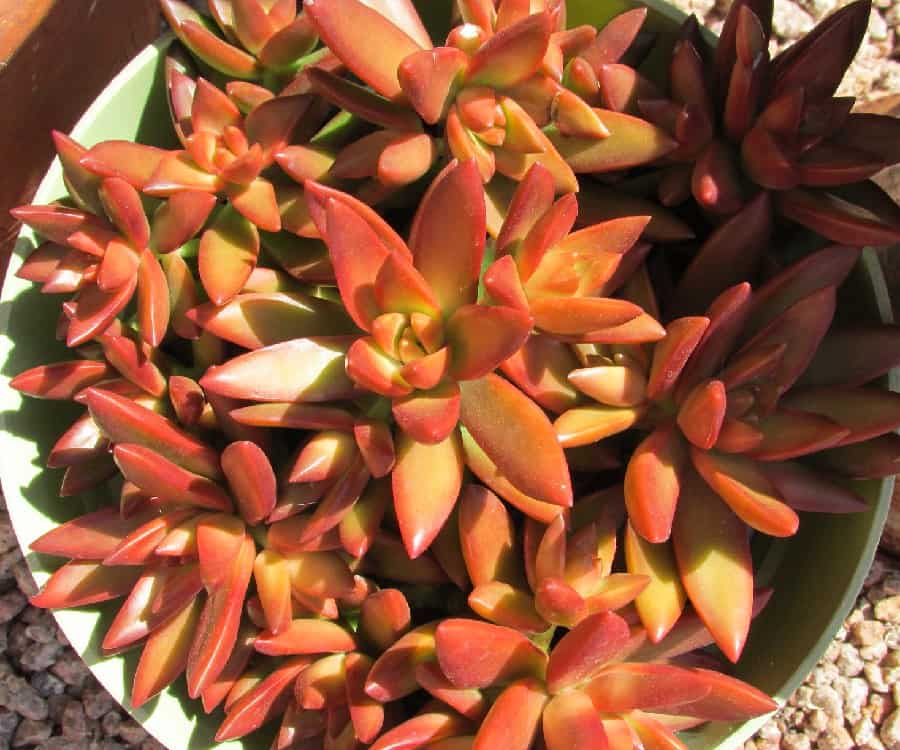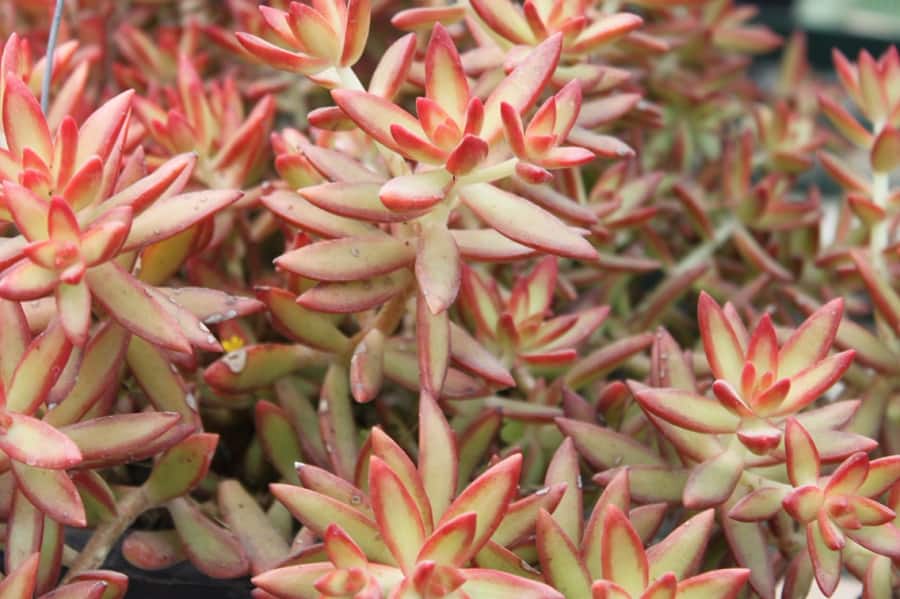Succulent Showdown: Sedum nussbaumerianum vs Sedum adolphii
Imagine two succulent siblings, both captivating in their own unique ways, vying for your attention. The Sedum nussbaumerianum and Sedum adolphii might appear similar at first glance, but upon closer inspection, their distinct personalities shine through. Get ready to dive into the fascinating world of these succulent wonders and uncover the intriguing differences and similarities that set them apart.

Related Post:
130+ Attractive Sedum Varieties [With Pictures]
Contents
Sedum Nussbaumerianum vs Sedum Adolphii
1. Rosette Revelations
The Sedum adolphii, also known as the golden sedum or golden glow, forms golden-hued rosettes that resemble tiny footballs. Meanwhile, the Sedum nussbaumerianum, affectionately called the Coppertone Sedum, boasts thicker, pointed rosettes that add a touch of drama to any succulent collection.

2. Leaf Language
Sedum adolphii leaves showcase a distinct banana shape and a vibrant yellow hue, while the Sedum nussbaumerianum leaves take on an almond-like appearance, smaller and shinier than their golden cousins.
3. Stress Response
When exposed to ample sunlight, the Sedum adolphii leaves embrace a fiery red hue, as if blushing from the attention. In contrast, the Sedum nussbaumerianum leaves turn a captivating copper shade under stress, revealing their unique resilience.

4. Flowering Frenzy
Both siblings delight with their blooming prowess during the spring months. The Sedum adolphii may produce yellow or white star-shaped flowers, while the Sedum nussbaumerianum showcases white flowers arranged in delightful clusters.
5. Growing Patterns
While both plants grow in a trailing manner, forming mesmerizing rosettes, the Sedum nussbaumerianum rosettes tend to be more pronounced and distinctive.
Care and Cultivation
While these two succulent siblings share some similarities in their care requirements, understanding their unique needs is crucial for their optimal growth and health.
Sedum adolphii Care

- Sunlight: Bask this golden beauty in at least 6 hours of direct sunlight each day. You’ll know it’s receiving adequate light when the leaves transition to a vibrant reddish hue.
- Watering: Follow the succulent mantra – soak the soil thoroughly, then allow it to dry completely between waterings. Excess moisture can quickly lead to root rot.
- Temperature: Protect this sun-lover from cold winter chills by bringing it indoors when temperatures dip.
- Fertilizing: During the active growing months of spring and summer, provide a diluted succulent fertilizer for an extra boost.
- Soil: Well-draining soil is a must for this golden gem. A cactus mix or succulent soil blend will ensure proper drainage.
Sedum Nussbaumerianum Care

- Sunlight: This beauty thrives in at least 6 hours of direct sunlight but can tolerate partial shade. Watch for those captivating copper hues – a sign it’s soaking up enough rays.
- Watering: Exercise caution when hydrating this succulent. Infrequent watering, around once every 10 days, is ideal to prevent overwatering and root rot.
- Temperature: Maintain temperatures between 60°F (16°C) and 70°F (21°C) with moderate humidity of 40-60% for optimal growth.
- Fertilizing: A diluted fertilizer applied during the spring and summer growing season will provide the nutrients needed for healthy growth.
- Soil: Excellent drainage is key for this succulent’s well-being. A well-draining cactus or succulent mix, enhanced with perlite or gravel, will keep roots happy.
